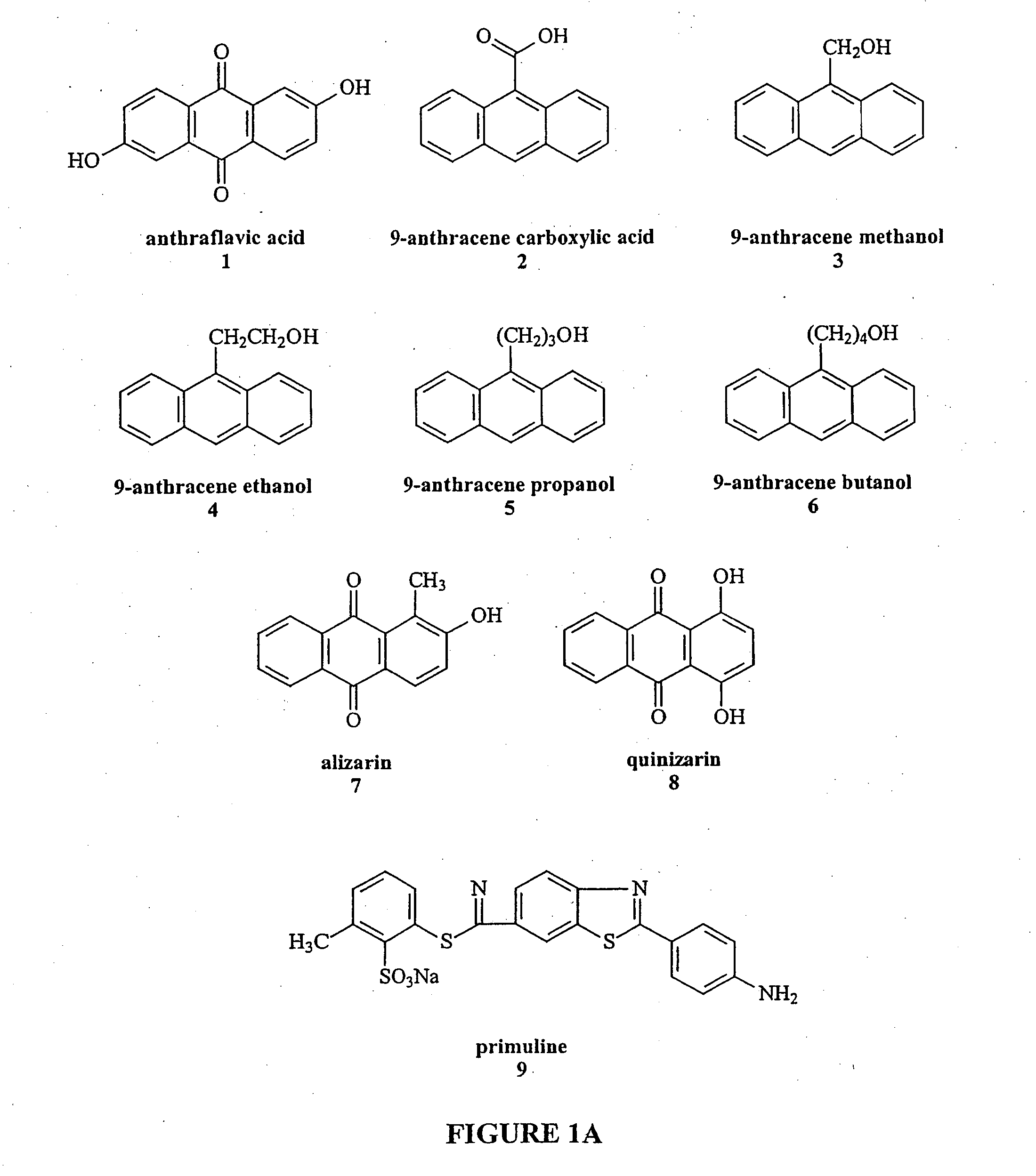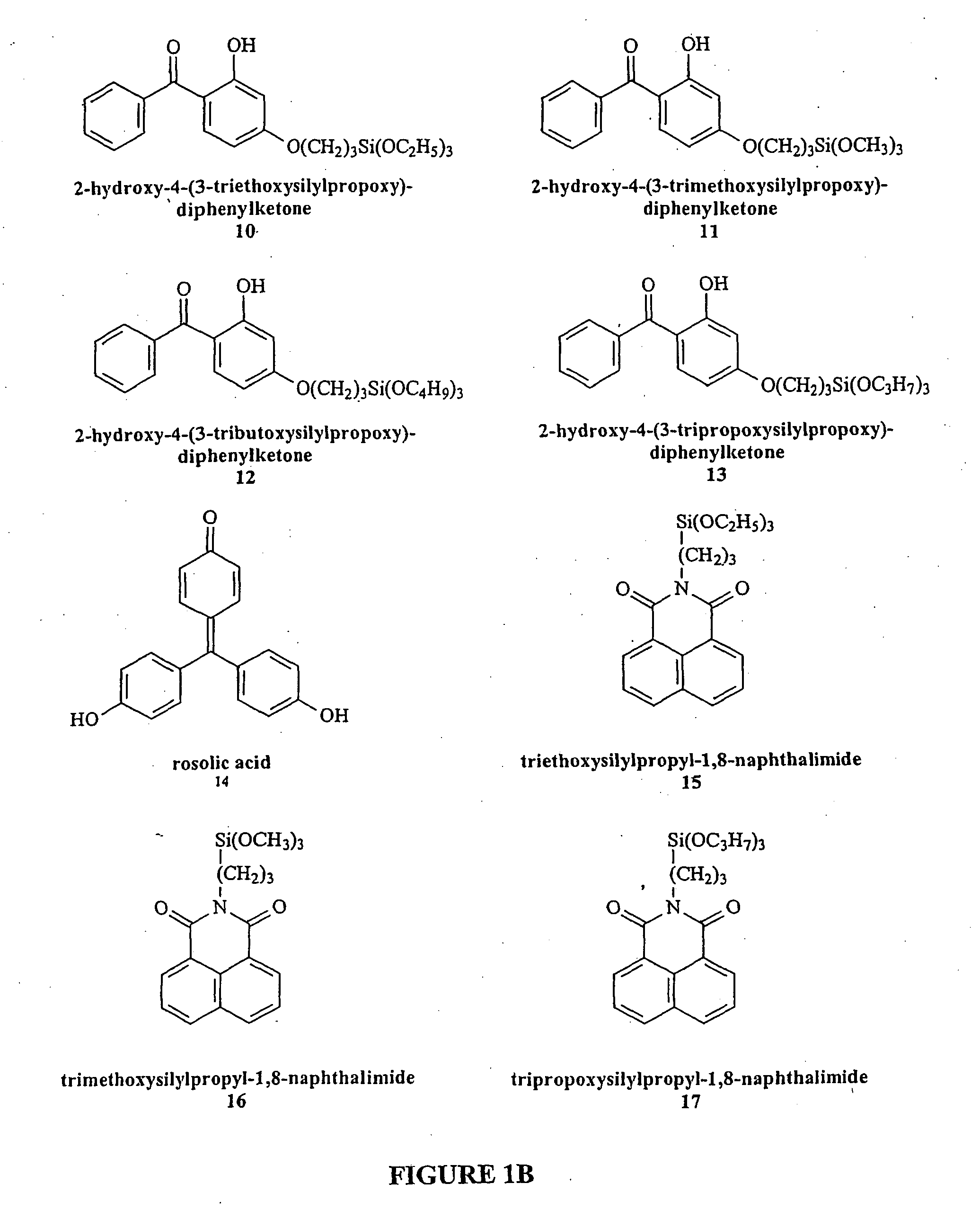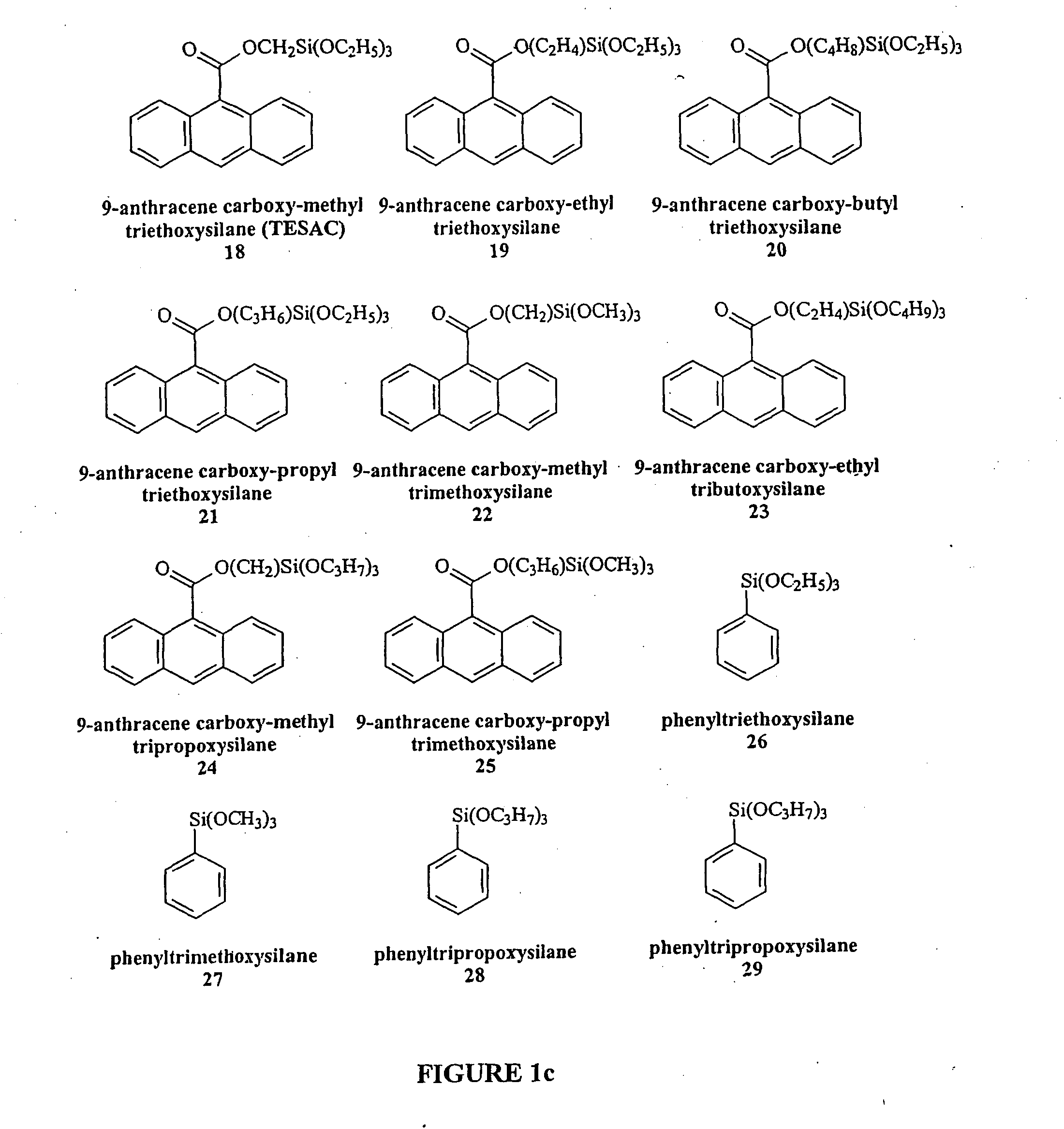Spin-on anti-reflective coatings for photolithography
a technology of anti-reflective coating and photolithography, which is applied in the direction of photosensitive materials, other chemical processes, instruments, etc., can solve the problems of limiting usable process sequences, introducing new challenges for manufacturing devices with smaller feature sizes, and variable linewidth of photolithography pattern patterns
- Summary
- Abstract
- Description
- Claims
- Application Information
AI Technical Summary
Benefits of technology
Problems solved by technology
Method used
Image
Examples
example 1
Synthesis of an Absorbing Spin-On Material Containing 9-anthracene Carboxy-Methyl Triethoxysilane and a pH Tuning Agent
[0059] In a 22-liter flask 6331.20 grams 2-propanol, 3166.66 grams acetone, 2633.78 grams TEOS, 1639.78 grams MTEOS, 958.97 grams 9-anthracene carboxy-methyl triethoxysilane, 119.24 grams 0.1 M nitric acid and 1425.58 grams deionized water were combined. The flask was refluxed and / or heated for 1 to 12 hours. To the solution, 932.80 grams of butanol and 20650.0 g of ethyl lactate was added. The solution was filtered to be used in the pH tuning experiments. A pH tuning agent, 0.1 M nitric acid, was added to 2 separate solutions of 650 g of the spin-on material that has a starting pH of about 1.5. The nitric acid was added in the following amounts and gave the following pH: a) 2.794 g (pH=0.7); b) 0.293 g (pH=0.75). APTEOS was added to two additional and separate solutions of 650 g of the same spin-on material in the following amounts giving the following pH values: ...
example 2
Synthesis of absorbing spin-on material containing 9-anthracene methanol, 2-hydroxy-4-(3-triethoxysilypropoxy)-diphenylketone, rosolic acid, and a pH tuning agent
[0084] In a 1-liter flask 297 grams 2-propanol, 148 grams acetone, 123 grams TEOS, 77 grams MTEOS, 25 grams 9-anthracene methanol, 10 grams 2-hydroxy-4-(3-triethoxysilypropoxy)-diphenylketone, 5 grams rosolic acid, 0.6 grams 0.1 M nitric acid and 72 grams deionized water were combined. The flask was refluxed and / or heated for 1 to 12 hours. To the solution, 111 grams of butanol, 459 grams 2-propanol, 230 grams of acetone, 309 grams of ethanol, 50 grams deionized water and 3.75 grams of 10% FC 430 (3M, Minneapolis, Minn.) were added. Thickness=1436 Å, n=1.479, k=0.1255.
Synthesis of absorbing spin-on material containing 9-anthracene methanol, 2-hydroxy-4-(3-triethoxysilypropoxy)-diphenylketone, rosolic acid, and a pH tuning agent
[0085] In a 1-liter flask 297 grams 2-propanol, 148 grams acetone, 123 grams TEOS, 77 grams MTE...
example 3
Synthesis of absorbing SOG containing 9-anthracene methanol, 2-hydroxy-4-(3-triethoxysilypropoxy)-diphenylketone, rosolic acid, and a pH tuning agent
[0092] In a 1-liter flask 297 grams 2-propanol, 148 grams acetone, 93 grams TEOS, 77 grams MTEOS, 20 grams 9-anthracene methanol, 60 grams 2-hydroxy-4-(3-triethoxysilypropoxy)-diphenylketone, 5 grams rosolic acid, 0.5599 grams 10 M acetic acid and 71.90 grams deionized water were combined. The flask was refluxed and / or heated for 1 to 12 hours. To the solution, 57 grams of butanol, 88 grams 2-propanol, 44 grams of acetone, 59 grams of ethanol, 9.5 grams deionized water and 3.75 grams of 10% FC 430 (3M, Minneapolis, Minn.) were added.
Synthesis of absorbing SOG containing 9-anthracene methanol, 2-hydroxy-4-(3-triethoxysilypropoxy)-diphenylketone, rosolic acid, and a pH tuning agent
[0093] In a 1-liter flask 297 grams 2-propanol, 148 grams acetone, 93 grams TEOS, 77 grams MTEOS, 20 grams 9-anthracene methanol, 60 grams 2-hydroxy-4-(3-tri...
PUM
| Property | Measurement | Unit |
|---|---|---|
| wavelengths | aaaaa | aaaaa |
| wavelengths | aaaaa | aaaaa |
| wavelengths | aaaaa | aaaaa |
Abstract
Description
Claims
Application Information
 Login to View More
Login to View More - R&D
- Intellectual Property
- Life Sciences
- Materials
- Tech Scout
- Unparalleled Data Quality
- Higher Quality Content
- 60% Fewer Hallucinations
Browse by: Latest US Patents, China's latest patents, Technical Efficacy Thesaurus, Application Domain, Technology Topic, Popular Technical Reports.
© 2025 PatSnap. All rights reserved.Legal|Privacy policy|Modern Slavery Act Transparency Statement|Sitemap|About US| Contact US: help@patsnap.com



